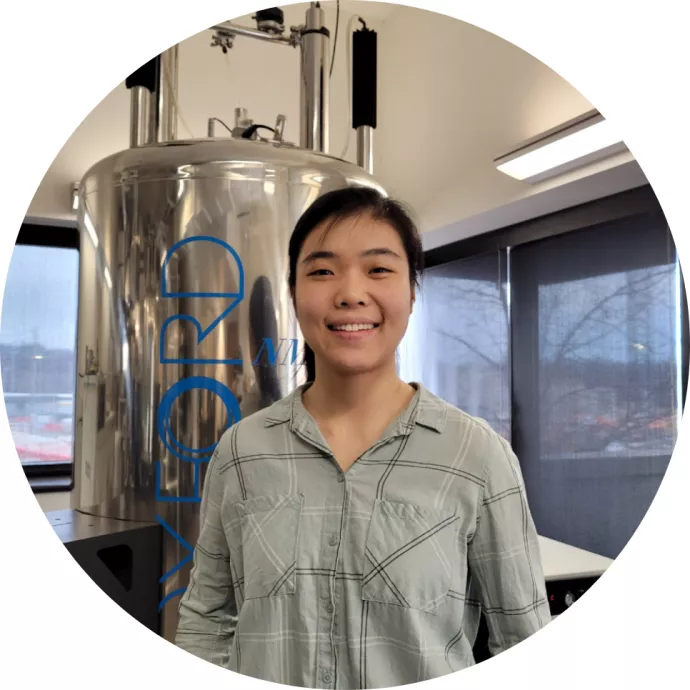
Meet Kate Huang!
-
Program: PhD Candidate
-
Research Area: Biological systems on molecular level
1. How did you come to UTM?
I was attracted to the research at the Prosser lab. I considered multiple schools and talked to many professors while deciding where to pursue a PhD, and the Prosser group felt like the right place to be for the next five years!
2. When did you realize that you wanted to pursue a graduate study?
The realization came during my undergraduate studies, where I worked for two years at a biochemistry research lab as a summer student and then as a thesis student. I thoroughly enjoyed my time there. I was mentored by fantastic scientists. I loved the intellectual stimulation, the process of mastering techniques, and those moments of finally figuring something out after pondering about them for hours and days. I felt that I was not done with learning and graduate school was the natural path to continue doing that.
3. What are your research interests? Tell us few exciting things about your research.
I am interested in how biological systems operate at the molecular level. Back in high school biology classes we were taught the “lock and key” and “induced fit” models of biomolecular recognition, which sounded like magic to me. I was intrigued by how biological systems were able to figure these things out and make them work in such a complicated yet orderly fashion. This fascination drove me to the field of structural biology, which is the study of the structure and motions of biomolecules such as proteins, nucleic acids, and lipid bilayers. Biomolecules and their complexes are dynamic systems - they can adopt multiple conformational states that reflect their functional activities. My PhD work explores the conformational landscape of a particularly important protein that sits in our cell membrane - the caffeine receptor (also known as the adenosine A2A receptor). This protein detects chemical signals from outside of the cell (such as caffeine) and through conformational changes in the receptor, transmits the signal to the cell interior, generating a biological response (such as alertness). My day-to-day work involves capturing the multiple conformational states of this receptor through various biochemical and biophysical techniques. Results from these studies have led us to better understand the mechanisms of receptor signaling and the associated pharmacological effects.
4. What is your goal when you finish your degree?
I would like to read a fantasy novel, rewatch The PhD Movie, then begin my post-doctoral fellowship position with the same level of curiosity and enthusiasm as a fresh undergrad.
5. Do you have any advice for students considering to pursue graduate studies in research?
I have two pieces of advice. One is to exercise due diligence on the literature before proceeding with a project or an experiment. This will save you time and effort in the long run. The other is to be patient with the process and understand that getting things to work takes time. Celebrate incremental progress, treat failures as learning opportunities, and don’t be afraid to step out of your comfort zone from time to time.
